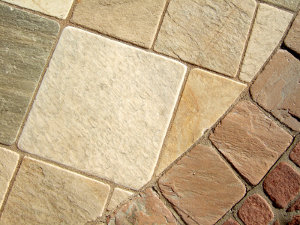As
promised, in this blog entry I will continue to talk about the many different
options of flooring choices. Last month I talked about the pros and cons of the
most frequently used types of today. This time I’ll be going over some of the
materials that are newer or just starting to make their way into the world of
residential interior design.
Cork
Flooring: Cork as a floor has actually been around for quite some time, however
we’re used to seeing it in commercial applications. Since this type of material
has so many wonderful benefits, we’re starting to see it more and more in
residential spaces. We get cork from the bark of the cork oak tree and what’s
cool about this specific tree is that when the bark gets harvested every nine
years, there is an inner protective layer that gets left behind allowing the
tree to continue growing and regenerate new bark – making this material
sustainable and eco-friendly. Some other benefits of a cork floor are that it’s
super durable and springs back to life even in areas of high traffic. Due
to this spring back effect, it can feel like you’re walking on air, so it’s
great for those who are constantly on their feet. Cork floors are usually stain
and mildew resistant if finished properly and its absorbent material can help
to reduce sound. What’s not so great about cork then? First and foremost, this
is one of the highest costing floors out there. Also, if not finished properly,
it can absorb water and quickly lose its reputation as a highly durable product.
Bamboo Flooring: Bamboo has a lot of similar characteristics to hardwood and is probably the most up and coming flooring material out there. Similar to cork, we’re dealing with another highly sustainable eco-friendly product. Bamboo is actually a grass that can grow up to nearly four feet in one day and when it’s harvested, the root system doesn’t get damaged - making it highly renewable. Some other great factors about this sturdy grass are that as a floor, it’s easy to install and clean. It’s even naturally hypoallergenic! The natural color of bamboo is sandy blonde which makes it a pretty great fit for most modern applications. Unfortunately, bamboo isn’t really any cheaper than hardwood and can be susceptible to water damage. If you love bamboo for its green footprint, be careful that the flooring you choose is formaldehyde free, otherwise harmful volatile organic compounds (VOC’s) can be released into the air overtime.
Stone
Flooring: There is really not a better way to get a natural look in your space
than by using stone flooring. Marble, limestone and slate are just some
examples of common stones used in the flooring world. I think the greatest
benefit to having a stone floor, besides of course the wow-factor impression it
gives off, is that is by far the most durable floor out there. Rocks are meant
to get weathered, and similar to a fine wine, it gets better with age. I tend
to add a lot of natural elements to spaces because of their timeless and
classic appeal – the same concept works for stone flooring. Once again though,
this is one of the most costly applications. It’s not so much that the stone
itself is expensive, but the labor to cut and install the product is highly
intensive. Stone flooring is not the greatest option for all applications since
it can be slippery when wet and you will want to have the stone sealed
correctly as they like to absorb stains and dirt.
Vinyl
Flooring: Last but not least, we have vinyl flooring. Vinyl has come a long way
since its first appearance on the scene and is now becoming a hot commodity
again. There are even certain vinyl products now that closely resemble high end
products such as wood, stone and even terrazzo. So what exactly is vinyl
flooring anyway? It’s a synthetic polymer flooring that we put different pigmentation in to get a bunch of different color options. Basically, it’s a
man-made product that is easy to reproduce and it’s flexible and non-porous.
Unlike most of the options on this list, vinyl is extremely inexpensive and
easy to install since it can be glued or nailed down; not to mention that it is
also water resistant. Due to the soft texture of vinyl, it can be easily
punctured by something sharp and you do have to be careful not to get a vinyl
that emits VOC’s.
So,
these are just a few options in the world of flooring. Some other highly
notable types that did not get mentioned here are concrete, laminate, earthen
floors and linoleum. Pick a floor that works for you and your space!



No comments:
Post a Comment